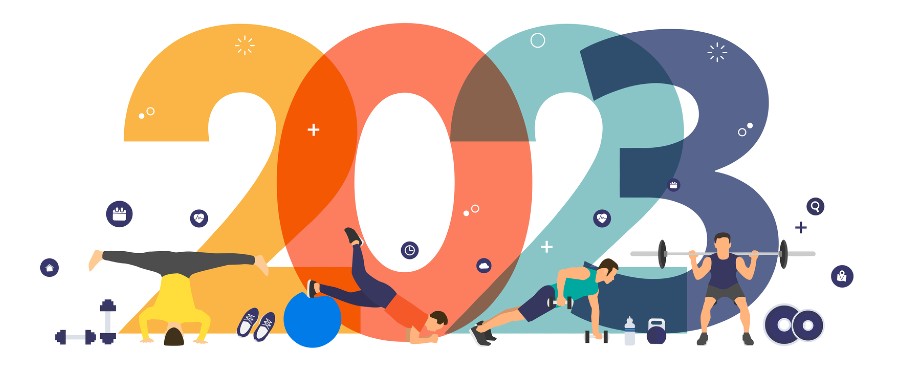 By Patrick Craig, Special FBA Contributor
By Patrick Craig, Special FBA Contributor
When I started working in and writing about the Fitness Industry ten years ago, it was a pretty straightforward operation. “Health is Wealth,” “No Pain No Gain,” “Get Buffed or Die Trying” were the buzzwords of the day. In the second decade of the new century, we watched Fitness Facilities expand across the country, from huge franchise operations to small one-shop operations. By the end of 2019, commercial realtors reported that strip mall rentals by fitness clubs were skyrocketing. Then… 2020 and the big collapse.
During the next two years, we all watched the industry as it struggled to climb out of what seemed like a bottomless pit. But, to tell the truth, it did not surprise me as I watched innovative, creative fitness devotees push back. With nowhere else to go, they turned to big tech for answers. After all, the tech industry had been hovering on the sidelines of our business for a few years, and this was the perfect opportunity for them to get a seat at the table.
In a matter of months, we were watching clubs presenting online live-stream Zoom training sessions. We saw clubs installing Gym software with public-facing calendars where members could book sessions and do them in the comfort and safety of their own homes, either live or pre-recorded. And, we noted a huge upswing in home workout centers—inexpensive and workable home studios—that were linked to training facilities that were as yet not really open to the public. We also saw a huge upswing in Hybrid Studios, combinations of on-site and online training centers that were reaching a much larger clientele.
Two years passed, and what started as a needed infusion of tech into a previously non-tech environment has become like something out of a dystopian movie of a future dominated by machines, like Terminator come to life in a fitness facility. Now I say this partly tongue in cheek, but new and, shall I say, unusual technological advancements are hitting the market every day and, like it or not, they are having an enormous impact on the fitness industry.
Here are some of them with the first one being the one you should be most careful of.
Biohacking
Biohacking can be described as a citizen or do-it-yourself biology. For many “biohackers,” this comprises making small, incremental diet or lifestyle changes to make minor improvements in your health and well-being. Biohacks promise anything from quick weight loss to enhanced brain function. But the best biohacking results come from being well-informed and cautious about what works for your body.
Biohacking comes in many forms.
- Nutrigenomics. Nutrigenomics focuses on how the food you eat interacts with your genes. This type of biohacking is based on the idea that your body’s total genetic expression can be mapped out and optimized by testing how different nutrients affect your health. Nutrigenomics also examines how different nutrients affect how you feel, think, and behave.
- DIY Biology. DIY biology is a type of biohacking spearheaded by people with education and experience in scientific fields. These biohackers share tips and techniques to help non-experts conduct structured experiments on themselves outside of a controlled experimental environment, like labs or medical offices.
- Grinder. (And this is where it gets a little bizarre.) Grinder is a biohacking subculture that sees every part of the human body as hackable. Grinders seek to become “cyborgs” by optimizing their bodies with a combination of gadgets, chemical injections, implants, and anything else they can put into their bodies to make them work the way they want them to.
Biohacking obviously has its questionable approaches, but the technologies that support it are quickly advancing—some say to a two-hundred-billion-dollar industry in the next few years. For instance (and here’s where it gets dicey), we are seeing implantable sensors like RFID that interact with electronic devices. With them, you can unlock doors, computers, and other gadgets. They can also connect to your payment and security systems. Some analysts believe the “human augmentation” market will grow, but in my view, it is going to move farther away from actual human fitness into a futuristic version of “body gaming.” So much for that.
Let’s pull back from the world of transhumanism to something a little more arcane but definitely more in the realm of the majority of today’s fitness buffs—
Wearable Technology
People are using wearables to measure their physical activity, sleep patterns, heart rate variability, and overall wellness. The new Apple Watch even has an ECG feature. The good news is that as the market expands, wearables are becoming more powerful, cheaper, and more comfortable. So, while I see Biohacking carving out a niche for itself, I think wearable technology will be the tool of choice for most devotees, at least in my lifetime.
And finally, there’s a new trend developing that is downright “human.” People are actually embracing more natural forms of improving their well-being. Practices that were once considered relaxing hobbies are now moving center stage and being prescribed to help improve physical fitness and well-being.
Forest Bathing
People are actually spending time outdoors absorbing the sights, sounds, smells, tastes, and feels of nature. And here is the interesting part—they leave their devices behind. Then they walk aimlessly and slowly, letting their body be their guide. They take their time and realize that it doesn’t matter if they get anywhere. Boy! Is this the antithesis of today’s action culture or what? And the good news: there is verifiable evidence that forest bathing may promote lower concentrations of cortisol, lower the pulse rate, lower blood pressure and improve cardiovascular and metabolic health.
In my next article, I will address even more of the brand-new avenues the fitness industry is taking. Until then, you can be sure that you are not in Kansas anymore, Toto.
Patrick Craig has worked in the Marketing Industry for the past twenty years. He is a published author and has written extensively about the fitness industry, particularly the gym software aspect of it. He has been with Money Movers, Inc. for the last six years where he serves as the Marketing and Operations Manager, web designer and coder, and maintains the custom websites Money Movers, Inc. develops for their Online Business Manager gym software clients.


Join the Conversation!